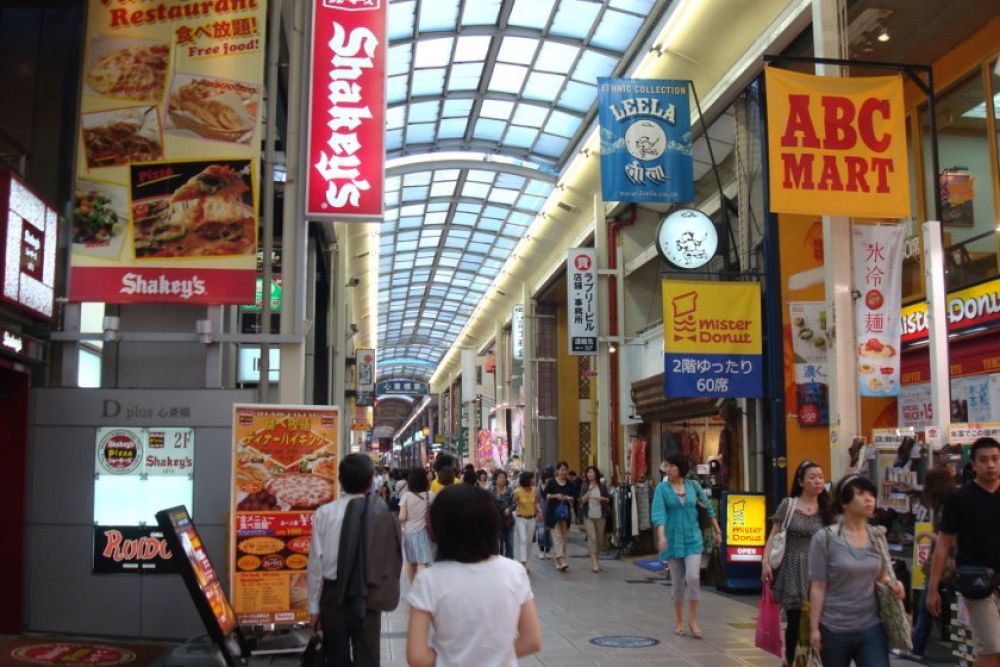

Shinsaibashisuji Shopping Street in Osaka, Japan, is a historic thoroughfare that has played a significant role in the city's urban development and tourism industry. Dating back to the Edo period, Shinsaibashisuji was originally established as a dry goods marketplace, thanks to the merchant culture that flourished during that time.
The history of Shinsaibashisuji can be traced to the early 17th century, when a local merchant, Shinsai Okada, received special permission from the Tokugawa shogunate to construct a bridge (hashi) over the Nagahori-gawa canal. This bridge, known as Shinsai-bashi, quickly became a vital connection point that spurred the area's commercial activity. Adjacent to the bridge, a shopping district began to take shape, and by the mid-19th century, it had developed into one of the most important commercial centers in Osaka.
In the years following the Meiji Restoration in 1868, Shinsaibashisuji underwent significant modernization. The area embraced Western architecture and fashion, becoming a hub for the latest trends and luxury goods. This modern appeal contributed to a boom in tourism as both domestic and international travelers flocked to the street to experience its unique blend of Japanese tradition and Western innovation.
After World War II, Shinsaibashisuji experienced a resurgence as Japan's economy recovered. The street was rapidly rebuilt, and by the 1960s and 1970s, it had established itself as a symbol of Osaka's prosperity. The introduction of department stores and boutiques selling everything from traditional kimonos to cutting-edge electronics attracted a new wave of tourists eager to participate in Japan's emerging consumer culture.
In recent years, Shinsaibashisuji Shopping Street has continued to adapt with the times, maintaining its status as a must-visit destination in Osaka. Tourists from around the world are drawn to its vibrant atmosphere, wide array of shops, and the iconic Glico Running Man sign, which has become one of the city's most photographed landmarks.
Eco-tourism and experiential travel have also influenced the street's offerings. Many shops now feature eco-friendly products and promote traditional crafts, allowing visitors to engage with Japan's rich cultural heritage. Furthermore, the street has embraced digital advancements, providing a seamless shopping experience through multi-lingual guides and mobile payment options catering to the tech-savvy traveler.
Looking forward, Shinsaibashisuji Shopping Street is poised to remain a prominent figure in Osaka's tourism landscape while embracing sustainable practices. Efforts are being made to preserve the historical charm of the area while introducing modern conveniences that match the ethical values of contemporary visitors. As travel patterns evolve, Shinsaibashisuji is expected to adapt accordingly, solidifying its place in the heart of Osaka's bustling urban culture.
With its rich history, endless shopping possibilities, and commitment to innovation, Shinsaibashisuji Shopping Street is more than just a shopping destination; it is an integral part of the story of Osaka and a vibrant testament to the evolution of tourism in Japan.